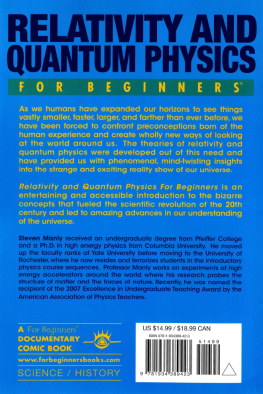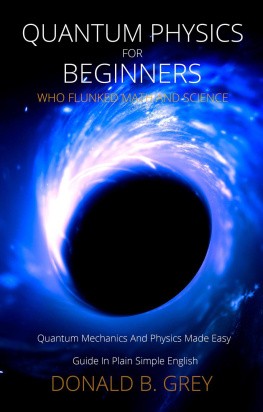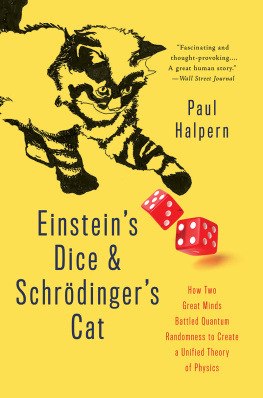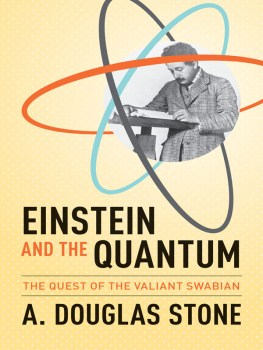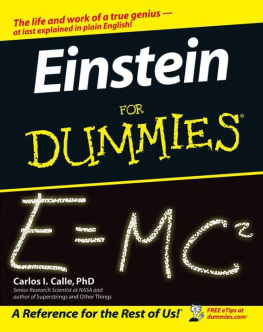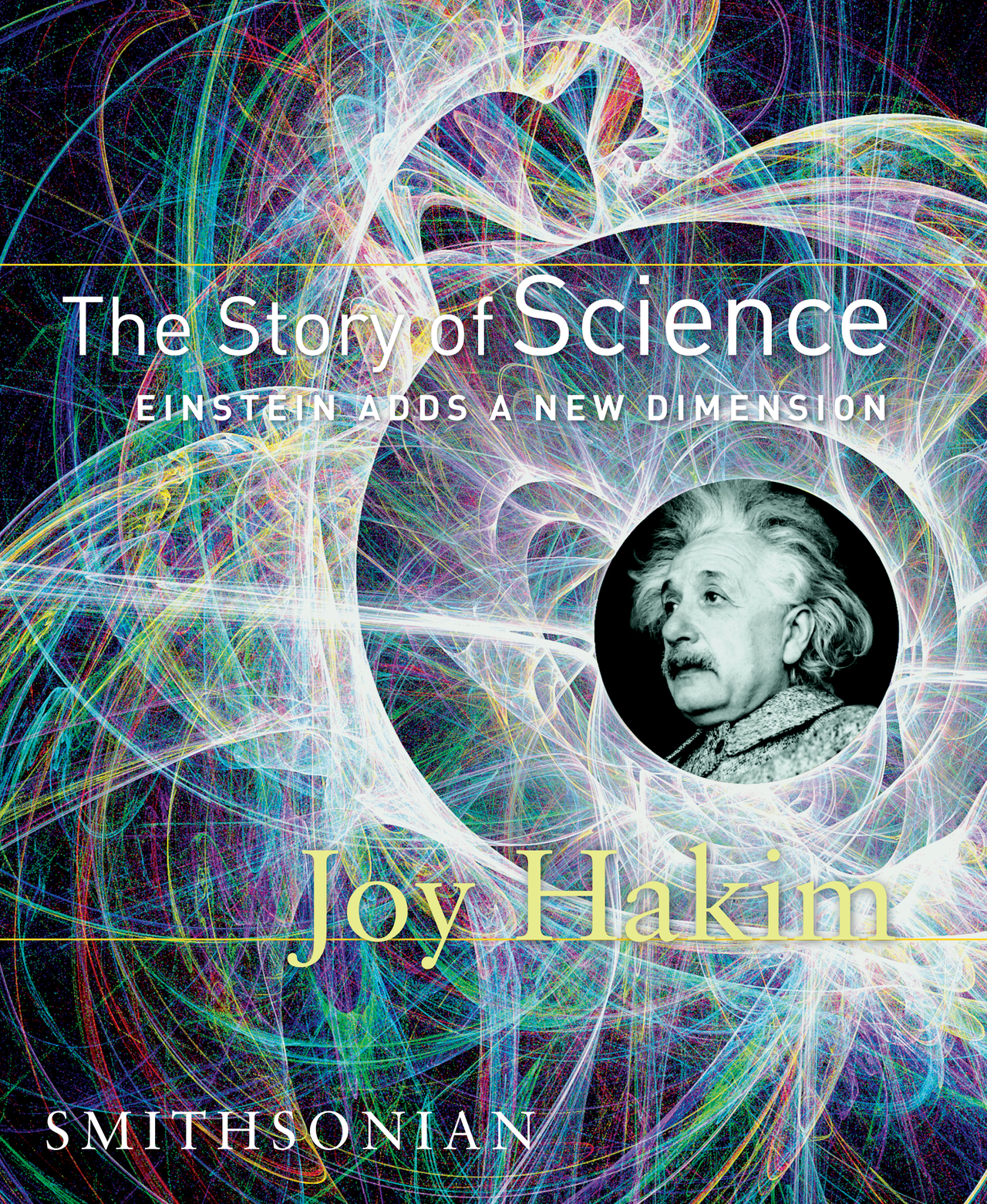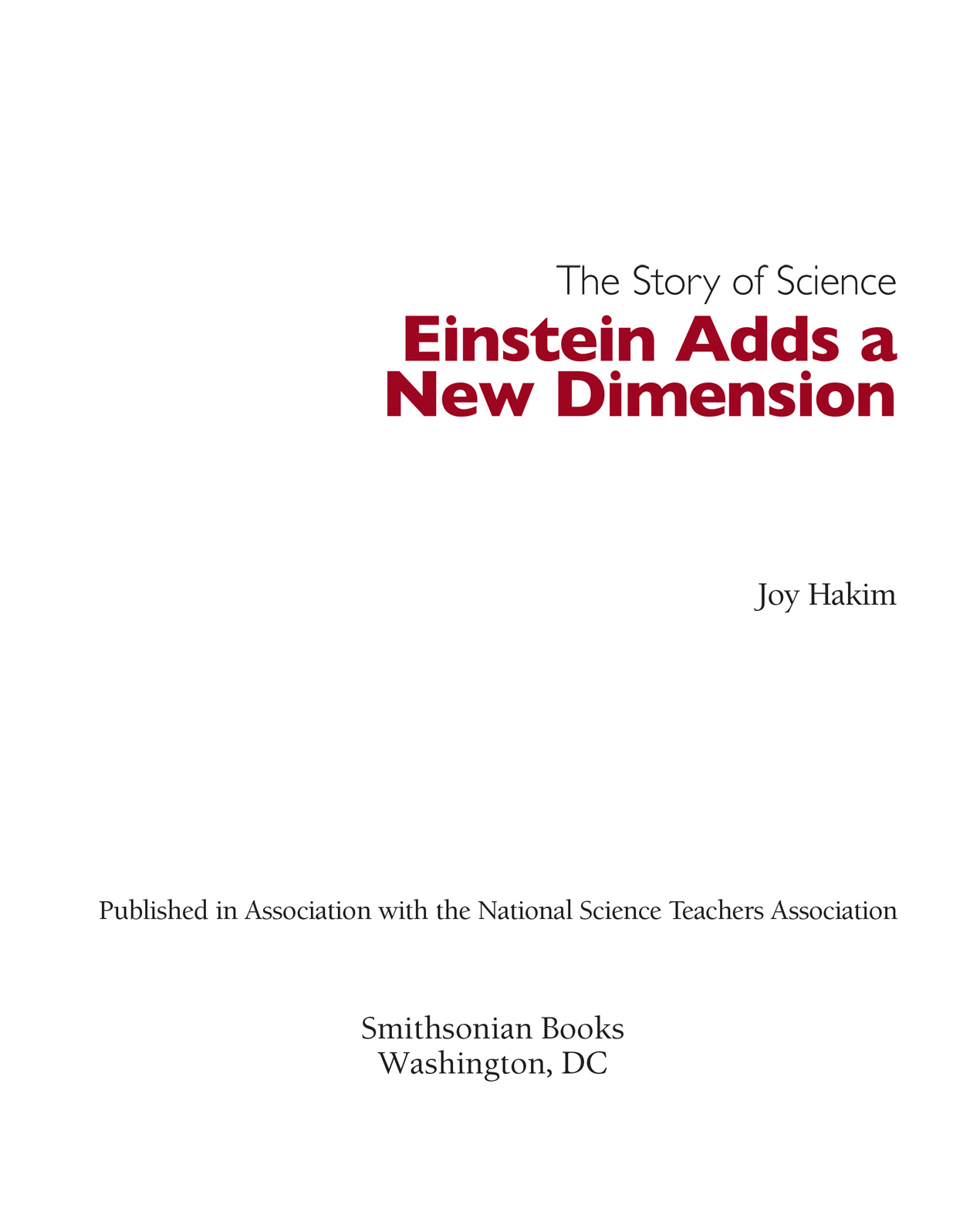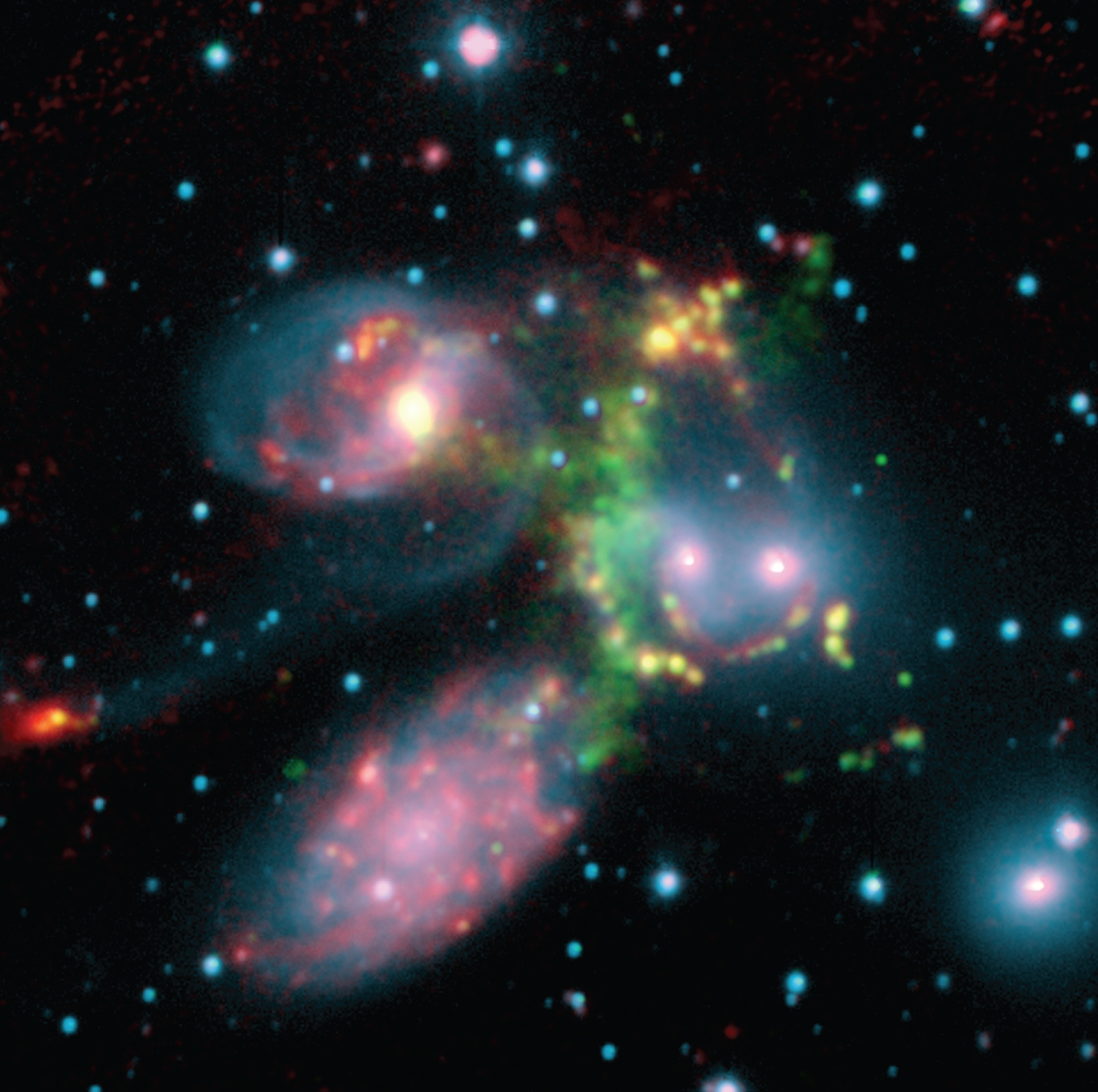Contents
2007 by Joy Hakim
All rights reserved
Published by Smithsonian Books
Produced by American Historical Publications
President: Byron Hollinshead
Managing Editor, Picture Editor, Production Manager: Sabine Russ
Editor: Lorraine Jean Hopping
Copy Editor: Monique Claire Vescia
Designer and Illustrator: Marleen Adlerblum
Production Assistant: Nancy Rose
Library of Congress Cataloging-in-Publication Data
Hakim, Joy.
The story of science: Einstein adds a new dimension / by Joy Hakim.
p.cm.
Includes bibliographical references and index.
ISBN 978-1-58834-162-4 (alk. paper)
1. ScienceHistory. I. Title. II. Title: Einstein adds a new dimension.
Q125.H263 2007
509dc22
2007014096
eBook ISBN: 978-1-58834-527-1
British Library Cataloguing-in-Publication Data available
For permission to reproduce illustrations appearing in this book, please correspond directly with the owners of the works, as listed in the individual credits. Smithsonian Books does not retain reproduction rights for these illustrations individually or maintain a file of addresses for photo sources.
v4.1
a
How to use your eBook
To improve the navigation of your eBook, links are organized by color. Green links provide definitions of key words. Blue links reveal images, diagrams, and other illustrated content. Red links provide supplemental information to the topic being discussed. We encourage you to explore all the links.
Dedication Page
Albert Einstein composed a handwritten message to the young daughter of a fellow professor. (It was 1921, and he was in Bologna, Italy. The professor was Federigo Enriques; his daughter was Adriana Enriques.) This is what Einstein wrote:
Study and, in general, the pursuit of truth and beauty is a sphere of activity in which we are permitted to remain children all our lives.
Permitted to remain children? Yes, he saw it as a privilege. Einstein also understood that the intense curiosity that is part of being a child is a key to creativity. Those who pursue truth and do it wellin any fieldalmost always hold on to the inquisitiveness and imagination that is part of being young.
Einstein believed this all his life. In 1947, when he was what many would call an old man, he wrote to a friend, Otto Juliusburger, who was celebrating his eightieth birthday,
People like you and me, though mortal, of course, like everyone else, do not grow old no matter how long we live. What I mean is that we never cease to stand like curious children before the great Mystery into which we are born. This interposes a distance between us and all that is unsatisfactory in the human sphereand that is no small matter.
So this book is written for young thinkersof all ages. I hope it will answer some questions and lead to new ones. It is written for you, dear reader, for my children and grandchildren, for Sabine Russs son, and Byron Hollinsheads grandsons, and for some bright rising stars, who all happen to be Taylors. They are:
| Meredith Christine Taylor | Cynthia Grace Taylor |
| Bradley James Taylor | Abigail Claire Frank Taylor |
| Samantha Marie Taylor | Samuel Bennett Frank Taylor |
| Katherine Rose Taylor | Mao Mao Andrew den Heeten |
| Victoria Lynne Taylor |
Contents
About Quarks, Red Giants, and Why This Book Got Written
You are a quark warehouse. Me, too. The desk Im leaning on is, too. Whats a quark? Ha! Youll have to read this book to find out. Actually, thats why I wrote the book: to find out for myself. When I want to learn something, I write a book. (Not a bad way to learn.) Id been hearing scientific terms, like relativity and quantum theory, and I didnt know what to make of them. Then I read about neutrinos, the Big Bang, and red giantsand I was really lost. So I wrote this book for me, and for people like me, who are curious about the world around us.
That world is strangeand it seems to be getting stranger. Or maybe it is just that modern science is telling us about thingslike dark energythat no one yet understands. As for todays science of cosmology? Ah, if only Galileo were here and could know what we now know. Cosmology has brought us solid data, beyond conjecture, that tells us the universe has an unfolding story. We now know, for instance, that ours is an expanding universe and that the expansion has begun to speed up.
There was a time when everyone seemed to believe that science was sober and serious, and that if you wanted to be imaginative you had to turn to fantasy. When it came to imagination, I didnt think science could touch Star Wars or Hollywoods special effects.
But, next to modern science, the big screen is no big deal. Todays science is more astonishing than anything science-fiction writers have ever invented. (My editor doesnt agree. She says good sci-fi takes the best of cutting-edge science and runs with it for a relationship that is mutually mind-bending. Maybe, but Im awed by the real stuff.)
We now know (thanks to Albert Einstein) that time on your watch may tick differently from time on mine. It depends on how fast were traveling relative to each other. And quarks? There isnt much chance youll see a quarkeven with our most sophisticated microscopes. Quarks are so small they make atoms seem mountainous.
But lets talk about big. Our universe is so vast that it would take some 13.7 billion years for a beam of light to travel from its farthest regions to a telescope on your roof. (How did we figure out 13.7 billion years? How old is the Earth? How fast does light travel? Youll find out in this book.)
Lewis Carroll, the nineteenth-century mathematician who wrote Alice in Wonderland and Through the Looking-Glass, had the White Queen say to Alice, Its a poor sort of memory that only works backwards. Carroll may have had hints of what we know today: Time doesnt have to go in only one direction.
As for gravity, well, it isnt what Newton thought it was when that legendary apple hit his head. Albert Einstein came along and told us that gravitation isnt a force at all.
When Einstein was a young man, he didnt know what we now know: Our galaxy, with its billions of stars, is just one of perhaps 100 billion galaxies. Yet Einsteins theories predicted the black holes that seem to lie at the center of those galaxies. Black holes? Fall into one and you might see the pastand maybe the futurewhiz by on the way to having the nuclei in your atoms recycled.
But black holes are old news. Youre a citizen of the twenty-first century, and cosmic wormholes are beckoning. Wormholes? They could be the way future astronauts will travel from this universe to another. Other universes? Just keep reading; you may be surprised at what youll learn.


